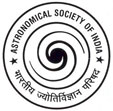On September 24, the Union Cabinet approved India’s participation in the project. The TMT is an optical and near-Infrared telescope with a primary mirror with an effective diameter of 30 meters. When ready around 2023, this will be the largest telescope of its kind in the world. It will enable astronomers to study the Universe with unprecedented detail, right up to the first formation of stars and galaxies. The telescope will be built and operated by a consortium of institutions from the USA, Japan, China, India and Canada. India will contribute about 10 percent of the cost of building the telescope and observatory, amounting to about Rs. 1300 Crore, over the construction period 2014-23. The total cost of the telescope will be about US $ 1.4 Billion. The Indian participation will be funded by the Government of India through the Department of Science and Technology (DST) and the Department of Atomic Energy (DAE). The DST will be the coordinating department for the project.
The TMT will be located on Mauna Kea, an extinct volcano on the Big Island in Hawaii. The TMT observatory will be at an altitude of about 4000 meters above sea level on a site which already hosts a number of large optical telescopes including the two Keck telescopes. This site has been chosen after careful study as ideally suited for astronomical observations at optical and near-infrared wavelengths due to its excellent observing conditions, very low humidity and low average temperature.
The primary mirror of the telescope will have an effective diameter of thirty meters and will be built out of hexagonal 492 segments, each of which will be 1.44 meters across. The shape of the whole mirror will be maintained through constant electronic monitoring and corrections using a system known as active optics. The images produced by the telescope will be rendered very sharp, removing the effects of the Earth’s atmosphere by an advanced system known as adaptive optics. The TMT will be the first telescope to incorporate these sophisticated features as integral parts. The TMT will have more than 10 times the light collection area of the current largest optical telescopes, and diffraction limited spatial resolution three times better than currently available. Compared to the highly successful Hubble Space Telescope, the TMT will have 144 times the collecting area and ten times better spatial resolution at near-infrared wavelengths. An observing platform around the telescope will have a number of large instruments for obtaining astronomical data.
About 30 percent of the Indian contribution will be in cash, while 70 percent of the contribution will be in kind, to be spent on vital components of the telescope to be built in India in partnership with various industries. These will include setting up of a facility to polish about 100 mirror segments and providing sophisticated components, like actuators, edge sensors and segment support assembly for the active optics which helps in maintaining accurately the shape of the primary mirror. India will also contribute significantly to the complex software necessary for the operation of the telescope, including the telescope control systems and various components of the observatory software. With this contribution in kind, India will acquire the capability to build other such large, sophisticated telescopes on its own and will be able to be the major contributor to international projects in the future.
The Indian effort is led by three institutes, namely the Indian Institute of Astrophysics (IIA) in Bengaluru, the Inter-University centre for Astronomy and Astrophysics in Pune and Aryabhatta Research Institute of Observational Sciences (ARIES) in Nainital. The India-TMT Coordination Centre will be located at IIA. While these three are the lead institutes, the project will have contributions from many other institutes and university departments in the country in a national effort which will be needed for successful participation by India. When ready, observing time will be available through competitive bidding to all astronomers in the country.
The ground breaking ceremony for the construction of the telescope will be took place at the observatory site on Mauna Kea in the morning on October 7, local time.

